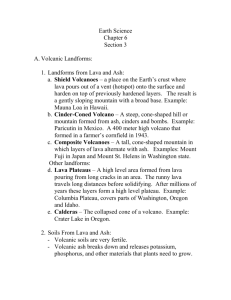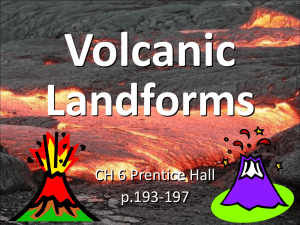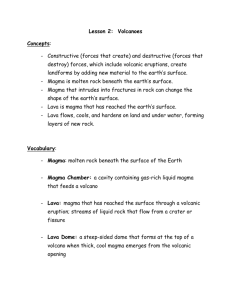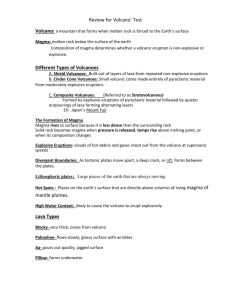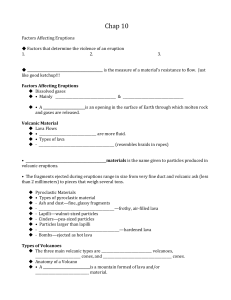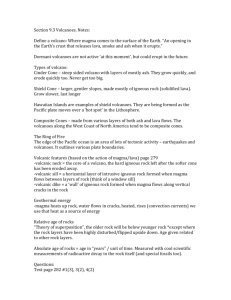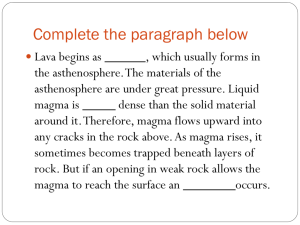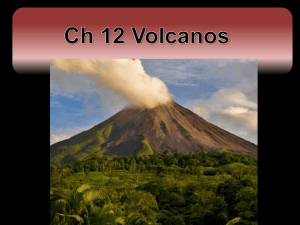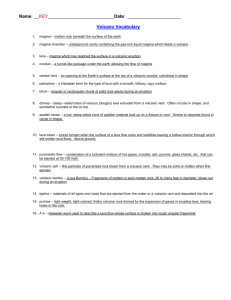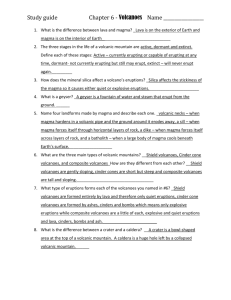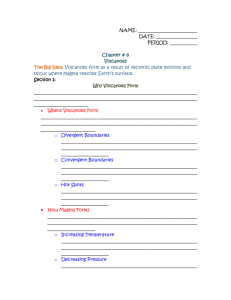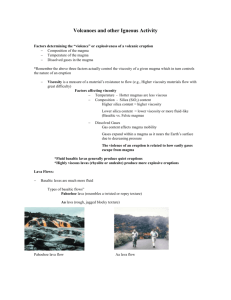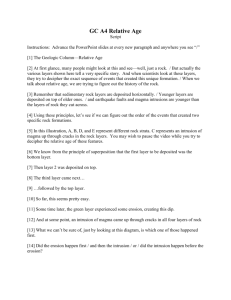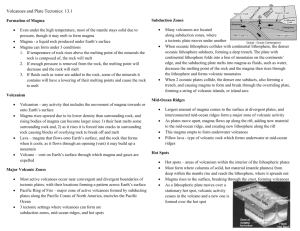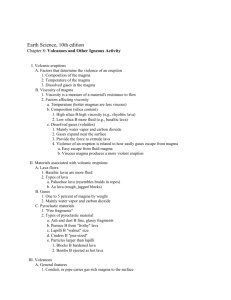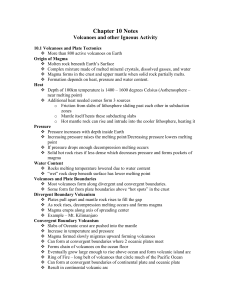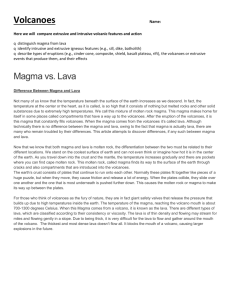Volcanic Landforms Notes
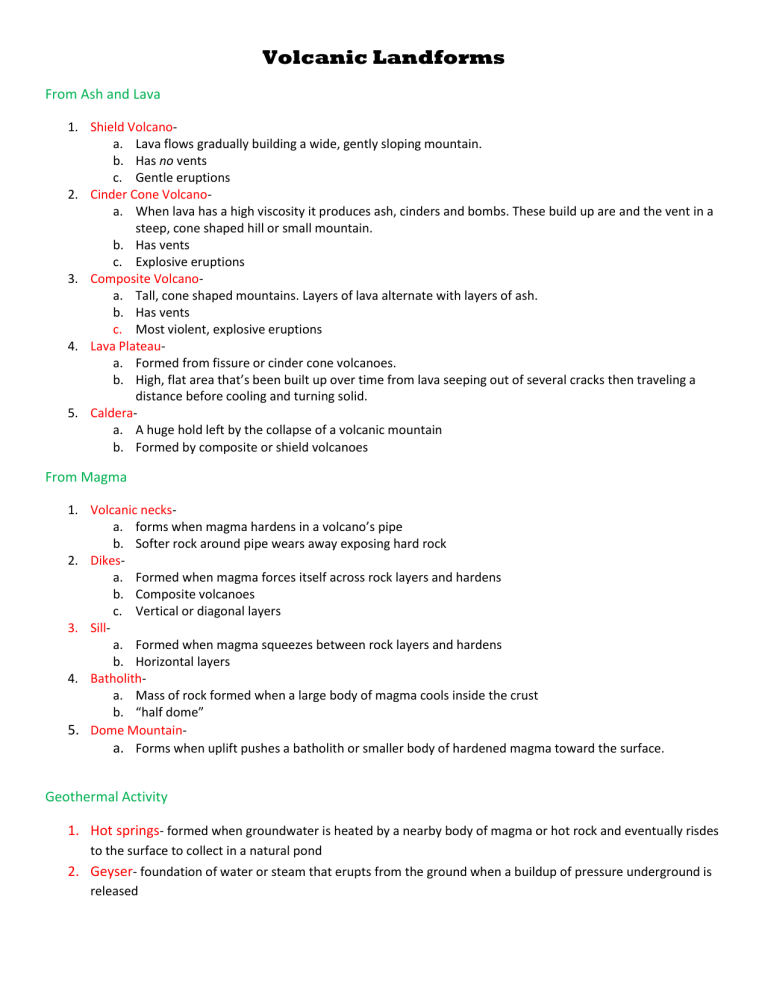
Volcanic Landforms
From Ash and Lava
1.
Shield Volcano - a.
Lava flows gradually building a wide, gently sloping mountain. b.
Has no vents c.
Gentle eruptions
2.
Cinder Cone Volcano - a.
When lava has a high viscosity it produces ash, cinders and bombs. These build up are and the vent in a steep, cone shaped hill or small mountain. b.
Has vents c.
Explosive eruptions
3.
Composite Volcano - a.
Tall, cone shaped mountains. Layers of lava alternate with layers of ash. b.
Has vents c.
Most violent, explosive eruptions
4.
Lava Plateau - a.
Formed from fissure or cinder cone volcanoes. b.
High, flat area that’s been built up over time from lava seeping out of several cracks then traveling a distance before cooling and turning solid.
5.
Caldera - a.
A huge hold left by the collapse of a volcanic mountain b.
Formed by composite or shield volcanoes
From Magma
1.
Volcanic necks - a.
forms when magma hardens in a volcano’s pipe b.
Softer rock around pipe wears away exposing hard rock
2.
Dikes - a.
Formed when magma forces itself across rock layers and hardens b.
Composite volcanoes
3.
Sill c.
Vertical or diagonal layers a.
Formed when magma squeezes between rock layers and hardens b.
Horizontal layers
4.
Batholith - a.
Mass of rock formed when a large body of magma cools inside the crust b.
“half dome”
5.
Dome Mountain a.
Forms when uplift pushes a batholith or smaller body of hardened magma toward the surface.
Geothermal Activity
1.
Hot springs
- formed when groundwater is heated by a nearby body of magma or hot rock and eventually risdes to the surface to collect in a natural pond
2.
Geyser
- foundation of water or steam that erupts from the ground when a buildup of pressure underground is released

